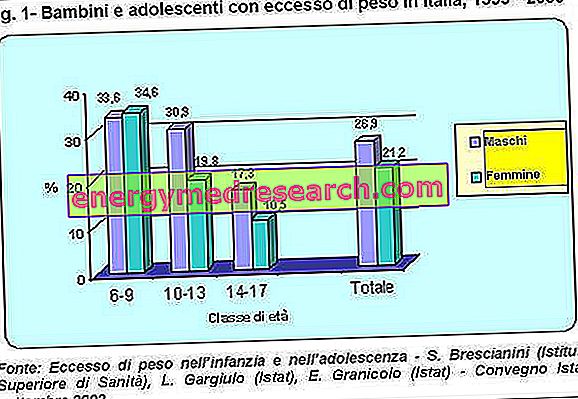Treatment and rehabilitation
INTRODUCTION: maintaining a good balance of the muscles with the passing of the years helps to make toned and efficient muscles and tendons improving the coordination of movements. On the contrary, with disuse, these important anatomical structures will become weaker, more rigid and obviously more susceptible to injury.
If the cuff lesion is significant and the athlete is very young, surgery is usually recommended to avoid the risk of fractures, dislocations and arthritis. In most cases this surgery is performed in arthroscopy thanks to the aid of optical fibers. Surgery in a large number of cases (75-90%) considerably reduces the pain until its complete disappearance. Functional recovery is less predictable, which is complete only in a modest percentage of cases (40-50%).
The conservative treatment, which is always attempted before moving to a possible surgical intervention, foresees in the initial period the regular administration of anti-inflammatory drugs to reduce pain and inflammation. Eventually the doctor may opt for a local injection of corticosteroids, especially if the pain is particularly intense. When the symptoms are significantly reduced, we move on to strengthening and lengthening the muscles.
The spontaneous healing of a partial rupture is rather unlikely given the anatomical complexity of the region and the poor blood circulation of the tendons. The healing period obviously varies depending on the type and extent of the injury and on the treatment chosen (conservative or surgical).
Generally the recovery times in case of injury are quite long: after a period of initial immobilization (6-12 days wearing a brace that protects the joint) in fact passive micromobing exercises are started.
Only after four or six weeks can active exercises of increasing intensity over time begin which, 4-6 months after the injury, will give back to the shoulder a good part of the strength it previously had. Particularly useful are the following mobility exercises to be performed initially as a free body, then against elastic resistance or in water:
Exercises for the Rotator Cuff
 | PENDULUM EXERCISE, Codman type: standing up, bend the trunk forward (45-90 °) leaning with the healthy limb on a support (eg a table); relax the muscles of the injured shoulder and swing the limb gently: forward / backward; internally / externally; with circular movements in a clockwise / anti-clockwise direction and gradually increasing the width of the circle. During the movements keep the muscles as relaxed as possible. Repeat each movement 10-15 times. This exercise can also be useful in the initial warm-up or cool-down phase to improve the functionality of the shoulder complex and prevent injuries. |
 | EXERCISE OF INTERNAL ROTATION behind the back: grasp with the hand of the healthy limb the upper extremity of the rod (or elastic) and with that of the limb to rehabilitate the lower part. Bring the rubber band behind your back as shown in the figure and slowly raise the stick and the other limb as high as possible with the hand of the healthy limb. Hold for five seconds, then slowly return to the starting position and repeat ten times. |
  | SHOULDER EXTENSION: hold the stick behind your head while keeping your elbows extended at your hips as shown in the figure. The palms of the hands must be facing backwards (prone hand). Slowly push the wand backwards so as to move it away from the body without flexing the trunk forward. Maintain the maximum extension position for 5 seconds, then slowly return to the starting position and repeat ten times. Starting from the same position, repeat the movement by extending only one limb at a time. As in the previous case, perform 10 repetitions on each side maintaining the maximum extension position for five seconds; then repeat for the opposite side. To conclude, slowly raise the wand upwards by grasping it with both hands (taken in pronation) until the mobility allows it (bend the elbows but without involving the trapezius in the movement; the collarbones will then be kept downwards). |
 | INTERNAL / EXTERNAL ROTATION: lying on the ground, supine, with a pillow under the head, hold the wand with both hands at a width equal to that of the shoulders. The elbows should be bent at 90 ° and kept close to the sides throughout the movement. Gently rotate the injured arm externally by moving only the forearm. Hold for five seconds, then return to the starting position and repeat ten times. The same sequence will then be repeated by internally rotating the injured arm. |
 | ANTEROPOSITION / SHOULDING OF THE SHOULDERS: standing slowly bring the shoulders forward, hold the position for a couple of seconds. Slowly turn your shoulders backwards (externally), until you reach the maximum rotation position, hold the position for 2 seconds and slowly return to the starting position. Repeat ten times. |
WARNINGS: before performing these exercises to increase shoulder mobility and improve the elasticity of the muscles and tendons that make up the rotator cuff, ask your doctor for advice. In particular remember to always perform a general warm-up before starting the stretching movements; wear comfortable clothing that does not hinder movement; choose a relaxing environment and respect the correct breathing technique; avoid sudden movements and excessive stretching. If there is pain in the shoulder during the movements, stop the exercises immediately and consult a doctor if the pain is particularly intense or does not disappear after a few days of rest. | |
Stretching Shoulders - Deltoids and Rotator Cuff
X Problems with video playback? Reload from YouTube Go to Video Page Watch the video on youtubeTo learn more: The dislocations



